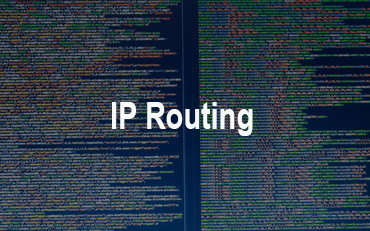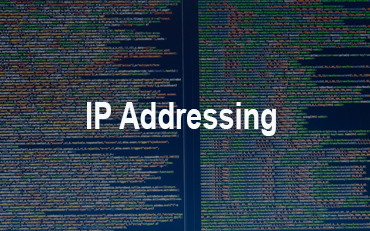IP Routing
IP routing is a process of sending packets from one network to another network or fron one host to another host in different network.
For Path determination router needs to do the following :
Know the destination address
Identify the sources it can learn from
Discover the possible ways
Select the best path
Maintain and verify routing information
Types of routing
1) Static Routing
2) Dynamic Routing
3) Default Routing
Static Routing
It is configured by admin administrator
We need of destination net ID
It is secure and fast
Used for small organization with the network of 10 to 15 routers
Administrative distance for static route 0 and 1
Disadvantages
Administrative work is more
Compulsory need of destination network IDs
Used for only small organization
Cannot be dynamically updated if topology changes
Dynamic Routing
In this routing protocol it used to find Network, and update routing tables on router.
Router use routing protocol to communicate between neighbor router. e.g RIP, IGRP, EIGRP, OSPF . Routing protocol is a set of rules
Advantages
There is no need to know the destination
Update the topology changes dynamically
Admin work is reduced
Used for large organization
Default Routing
It is configured for unknown destination
Generally used in the internet where destination are unknown
Configured at end point
It is the last preferred routing.
Routed protocol
Routed protocol used between router to direct user traffic also called network protocol.
Admin distance (AD) is a value from 0 to 255
0 is more trusted and
255 means no traffic will pass with this route.
If both advertise route to the same network have the same Id then routing protocol Matrix such as hope Count On bandwidth of the line will be used to find the best part to the remote network
Type of routing(Dynamic) protocol
1) Distance vector protocol
2) Link state protocol
3) Hybrid protocol
1) Distance Vector Protocol find a best path to a remote network by judging distance.
Its is Classful routing protocol.
Best route is nothing but the route with least number of hope.
e.g. RIP, IGRP
2) Link State Protocol also called open shortest path first, each routers create 3 separate tables. One of the tables keeps track of directly connected neighbours and the next one determines the topology of router and entire Network and last one is used as a routing table.
e.g OSPF
3) Hybrid Protocol uses both properties of distance vector and link state protocol.
e.g EIGRP
Matric : Identify the number of hope to the destination. A single hope refer to the number of local network and the packet must move through.
Cisco Three Layer / Three-tier Hierarchical Network Model
Cisco has developed a layered hierarchical model for designing a reliable network infrastructure.Benefits of using Cisco’s hierarchical model are network stability, reliability and cost-effectiveness.Cisco’s 3 Layered model consist of,
a) The Core layer
b) The Distribution layer
c) The Access layer
a) The Core layer : The core layer is main part of network,it transfer very heavy traffic in a short time.It is high speed router and switches.
Example : High speed WAN routers and switches
Cisco switches 7000, 7200, 7500, and 12000 for WAN use,
Cisco switches 4000, 5000 and 6000 series for LAN use.
b) The Distribution layer : It is a communication channel between the access and the core layer. It managed Routing, filtering, and QoS policies . It is smartest layer.
Examples : LAN routers, layer 3 switches.
c) The Access layer : the Access layer, also called the desktop layer, focuses on connecting client devices, such as workstations, laptops, servers and peripherals on the internal network (same broadcast domain).This layer usually incorporates Layer 2 switches and access points that provide connectivity between workstations and servers.
Example : switches which used to connect Computers, Printers, Servers etc.
Segmenting a network using a Router
Segmentation of network is the process of segmenting one big network into smaller networks. Router used to segmented big network into small subnet .As we know that if number of device increase in big network then broadcast also increases and it will create network issues.
What is Unicast, What is Multicast, What is Broadcast
Unicast
In unicast, the information source sends a separate copy of information to each host that needs the information.
Multicast
Multicast is the term used to describe communication where a piece of information is sent from one or more points to a set of other points.
Broadcast
In broadcast, the information source sends information to all hosts on the network, even if some hosts do not need the information.
What is Administrative Distance ?
Admin distance (AD) is a value from 0 to 255
0 is more trusted and
255 means no traffic will pass with this route.
| Administrative Distance (AD) | Route Type |
|---|---|
| 0 | Connected interface |
| 0 or 1 | Static Route |
| 90 | Internal EIGRP Route (within the same Autonomous System (AS)) |
| 100 | IGRP Route |
| 110 | OSPF Route |
| 115 | IS-IS |
| 120 | RIP Route |
| 255 | Unknown Route |
You May Also Enjoy Reading This …



